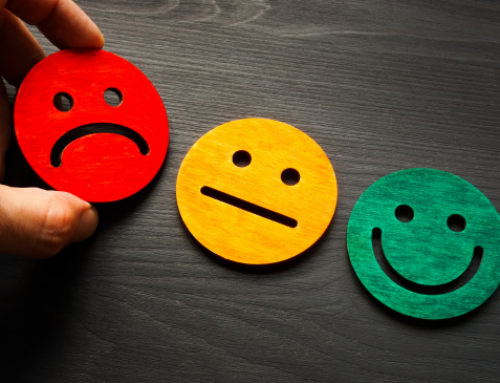Johnny Tzoganakis:
COVID-19 may not be the only immediate threat to public health: measures to combat it may prove very deadly as well. There are a number of opinions on the medical efficacy of one of the main measures being taken across Canada—lockdowns—but there is an increasing body of evidence to suggest that they may result in untold deaths that are not being attributed to the pandemic.
For starters, one, perhaps unsurprising, consequence of the lockdowns is a potential increase in suicides. Numbers on suicides are hard to pinpoint definitively, primarily because they are not always easy to classify as such, and the statistics for suicides in Canada in 2020 would further suggest that suicides have gone down rather than up. Some have attributed this to an effect similar to the decrease in suicide rates during wars.
However, deeper consideration shows why there is still reason to be concerned.
One such reason: unemployment has gone up considerably. According to Statistics Canada, the unemployment rate from February to May 2020 (the timeframe, roughly, of the initial lockdowns) rose by 8.1 percentage points to a total of 13.7 per cent. As of April 2021, it stood at 8.1 per cent, still higher than the pre-lockdown rate of under 6 per cent. There is a well-established link between suicide and unemployment rates. In a 2019 study by professor Ron Kneebone at the University of Calgary’s School of Public Policy, a one per cent increase in unemployment across Canada was found to result in a 2.1 per cent increase in the suicide rate.
There also appears to be an increase in other mental health concerns: in June 2020 the Canadian Mental Health Association reported an increase in suicidal thoughts, depression, and self-harm attempts among people already experiencing mental health issues before the pandemic.
The number of mental health issues among youth seems to be increasing as well: McMaster Children’s Hospital has reported a tripling in the number of youth admitted to the hospital after a suicide attempt, over a period of four months during lockdowns. Many of them reported increased social isolation and home conflict because of COVID-19 restrictions as factors.
The result of all the above considerations? A likely sharp increase in suicides across Canada in 2021. It is too early to say, but past experience suggests this will be the case.
It is also reasonable to expect an increase in deaths from drug overdose.
Several Canadian provinces have already seen an increase in opioid deaths during 2020 lockdowns compared to 2019 (around the same part of the year), with Health Canada reporting that, “Recent data from several jurisdictions across Canada and the Public Health Agency of Canada show a worrying increase in opioid-related harms and deaths since the beginning of the COVID-19 outbreak”.
Several provinces experienced this “worrying increase.”
In British Columbia, according to the British Columbia Centre for Disease Control, 1,726 deaths from illicit drugs were recorded in 2020 as compared with 984 in 2019—a 74 per cent increase. This figure outnumbers the year’s COVID-19 deaths, which were 1,391 in total.
According to a report by the Ontario Drug Policy Research Network, Ontario saw 2,050 opioid-related deaths from March to December of 2020, contrasted with 1,162 deaths over the same period in 2019 (a 76 per cent increase). By comparison, Public Health Ontario reports around 4,455 deaths of COVID-19 throughout 2020.
According to provincial data, Alberta surpassed its record for yearly overdoses with 904 deaths from opioid toxicity between January and October 2020, contrasted with 627 the entire year prior. The total number of COVID deaths, however, reached 1,002 by the end of 2020.
What might have caused all this excess mortality? Many experts in the field cite factors directly resulting from COVID-19 lockdowns, such as the shut-down of in-person rehab programs (or perhaps unwillingness to attend from fear of the illness); increased isolation and stress, which can drive drug use; decreased access to safe or supervised consumption; and a general shutdown of gyms and other community centres that might have helped struggling drug users find their footing.
One paradoxical consequence of increased attention to COVID-19 is a decrease in other treatments that will end up having deleterious health consequences. Anticipating a massive influx of COVID cases requiring hospital care, across the country many treatments (including so-called elective surgeries) and diagnostic procedures were cancelled. However, there is evidence to suggest that this may have done more harm than good.
There are not comprehensive figures for the number of cancelled surgeries nationwide, but looking at some individual provinces helps provide an idea. The Canadian Medical Association Journal published a study estimating that Ontario had a backlog of 148,000 surgeries as of June 13, 2020. In BC, it was confirmed on May 7, 2020, that around 30,000 elective surgeries were cancelled.
Despite many of these being labeled elective surgeries, the consequences have still been grave. On April 28, 2020, Ontario Health Minister Christine Elliott said that up to 35 cardiac care patients may have died after their heart surgeries were cancelled to free up hospital beds.
If this happened to people only in Ontario, only in cardiac care, and only six weeks into a lockdown—how many more may have died in Ontario and across Canada? Even elective surgeries can be life-saving, as the term “elective” is simply used to distinguish from emergency surgeries—ones that can offset immediate death.
However, there are figures to corroborate this intuition as well. In December 2020, the public policy think tank Second Street released a report documenting that 1,480 Canadians died during 2018-19 while waiting for surgeries. These are pre-COVID figures, when Canadian hospitals were ostensibly not pushed to their breaking point and routinely cancelling surgeries to deal with a pandemic. With the efforts to free hospital beds by cancelling procedures, it is almost certain that this number has increased.
Medical fatalities, however, can emerge from more than just missed procedures. Medical imaging also plays an important role, as it often allows doctors to notice serious conditions at treatable stages. Not performing these diagnostics in time (or perhaps not at all) may result in deaths that could have been avoided, and a substantial number at that.
According to a report by the Justice Centre for Constitutional Freedoms (JCCF), more than 200,000 Ontarians missed important diagnostic imaging procedures, such as MRIs and CT scans. The report further notes that these are expensive, non-trivial imaging procedures, and so are undertaken for good reason. The implication is a disturbing one: across Canada, it is possible that many Canadians missed testing that could have revealed life-threatening conditions. The exact number of possible deaths is hard to pinpoint, however, as many of the provincial governments are either unable or unwilling to make any inquiry into the matter (as the JCCF has inquired about), the implications of such delayed and missed testing are disturbingly clear.
This is not a trend solely in Canada, either. In the UK, The Lancet published a study with a sample size of over 93,600 cancer patients. It concluded that there would be 3,291 to 3,621 avoidable deaths and 59,204 to 63,229 years of life lost as a result of diagnoses delayed because of COVID-19 lockdowns. These results can, reasonably, be extrapolated to Canada and the rest of the world. Failure to diagnose and treat cancer within an appropriate time will have similarly catastrophic consequences everywhere hospital care was scaled back. And this is for cancer alone—what about other conditions that require immediate medical attention?
Those with underlying health conditions were not the only to be denied treatment, however. The same happened to a demographic particularly vulnerable to COVID-19: the elderly.
Speaking to The Interim, Alex Schadenberg, executive director of the Euthanasia Prevention Coalition, defined “stealth euthanasia” as “intentionally denying someone basic beneficial care” and stated that this was carried out on the elderly based on COVID-19 protocols.
On his blog, Schadenberg cites a report by the Canadian Institute for Health Information (with data up to May 25, 2020) stating that residents of Canada’s long-term care (LTC) homes were 81 per cent of all COVID deaths—the highest number out of all the Organization for Economic Co-operation and Development countries – that particular population representing only 18 per cent of Canada’s case.
The reason for this? Schadenberg proposes it is an absence of treatment and an abuse of palliative care for LTC patients.
In another blog post from April 6, 2020, Schadenberg finds the culprit of this neglect and abuse in a triage protocol formulated by Dr. James Downar, which excludes from treatment patients who have a higher predicted mortality, which would include the elderly.
The protocol would further provide those denied treatment with palliative sedation for the purpose of causing death, stating that it “is preferable to medical assistance in dying (MAiD) for patients with severe respiratory failure caused by SARS-CoV-2, given the 10-day reflection period, number of witnesses and assessors required, and the current requirement for full capacity to determine eligibility for MAiD.”
Schadenberg wrote, “So palliative care becomes a way of providing a comfortable death for people who have been medically abandoned.”
While these are counted as COVID deaths, their deaths were hastened by policies meant to address the pandemic. With a different set of policies, many might have lived.




